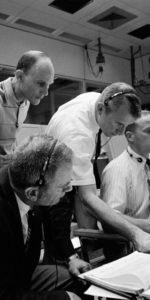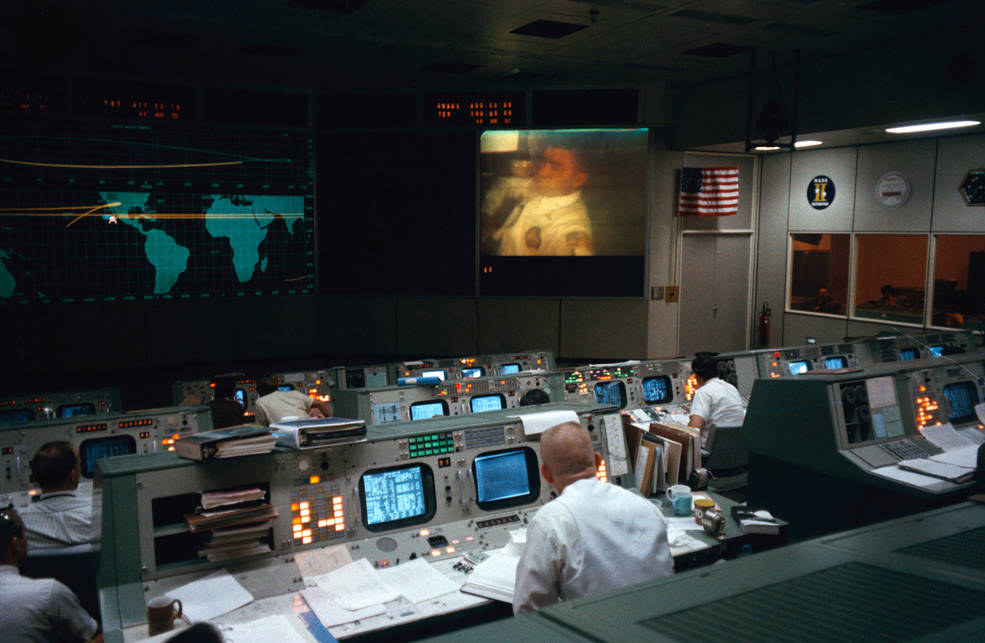
Fifty years ago today, on Saturday, 11 April 1970, the third mission aimed at landing humans on the Moon got underway, with a spectacular launch from Pad 39A at the Kennedy Space Center (KSC) in Florida. As recounted last weekend by AmericaSpace, Apollo 13 suffered its fair share of misfortunes ahead of launch, when a case of German measles forced NASA to replace Command Module Pilot (CMP) Ken Mattingly with his backup, Jack Swigert, only days before leaving Earth.
A shutdown of the center engine of the Saturn V booster added another moment of drama, but by 13 April—two days into their four-day trek to the Moon—the mission seemed to be proceeding according to schedule.
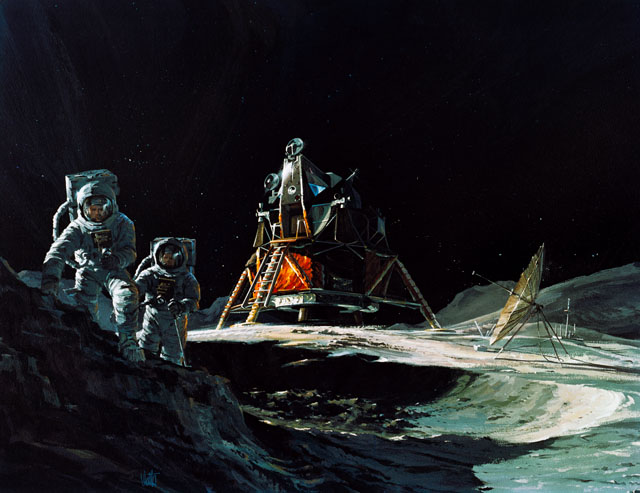
That evening, Commander Jim Lovell proudly showed off his spacecraft to an Earthly audience. Starting with the lunar module, which his crew had named “Aquarius”, Lovell pointed out the helmets, the hammocks and the tools which he and Lunar Module Pilot (LMP) Fred Haise would use to explore the hilly Fra Mauro region of the Moon. At length, Lovell floated back through a connecting tunnel into the command module, “Odyssey”, wishing his audience a pleasant night’s sleep. In the background, the haunting theme to 2001: A Space Odyssey thundered from a Walkman.
By now, Lovell, Haise and CMP Swigert were halfway to the Moon and their mission appeared to be proceeding perfectly. Flight controllers were bored to tears—the only issue appeared to be Swigert having forgotten to file his income tax returns and, every so often, the mischievous Haise would set off the bang of the cabin relief valve to scare his crewmates. Humanity’s third expedition to the lunar surface, so far, was as exciting to most people on Earth as a third-class train ticket.
A tiny cryostat would soon turn everyone’s complacency on its head.
Deep within the bowels of the service module were a pair of tanks filled with liquid oxygen and two others, filled with liquid hydrogen. Together, they fed the spacecraft’s fuel cells, providing electricity, heat and drinking water. A few weeks earlier, during a routine test on the launch pad, these tanks had been filled, then drained…and technicians uncovered a problem. For some reason, they were unable to remove all of the liquid oxygen from the No. 2 tank; its quantity dropped to 92 percent and refused to budge any further. Gaseous oxygen was applied in an effort to expel the liquid oxygen, but to no avail.
On 27 March 1970, further attempts were made. Again, they were fruitless. The best option, it seemed, was to “boil” off the remaining liquid oxygen with the tank’s electrical heater. This process took eight hours of 65-volt power from the Ground Support Equipment (GSE). Lovell and Mattingly both agreed that it was safe to fly. They would live to regret the decision.
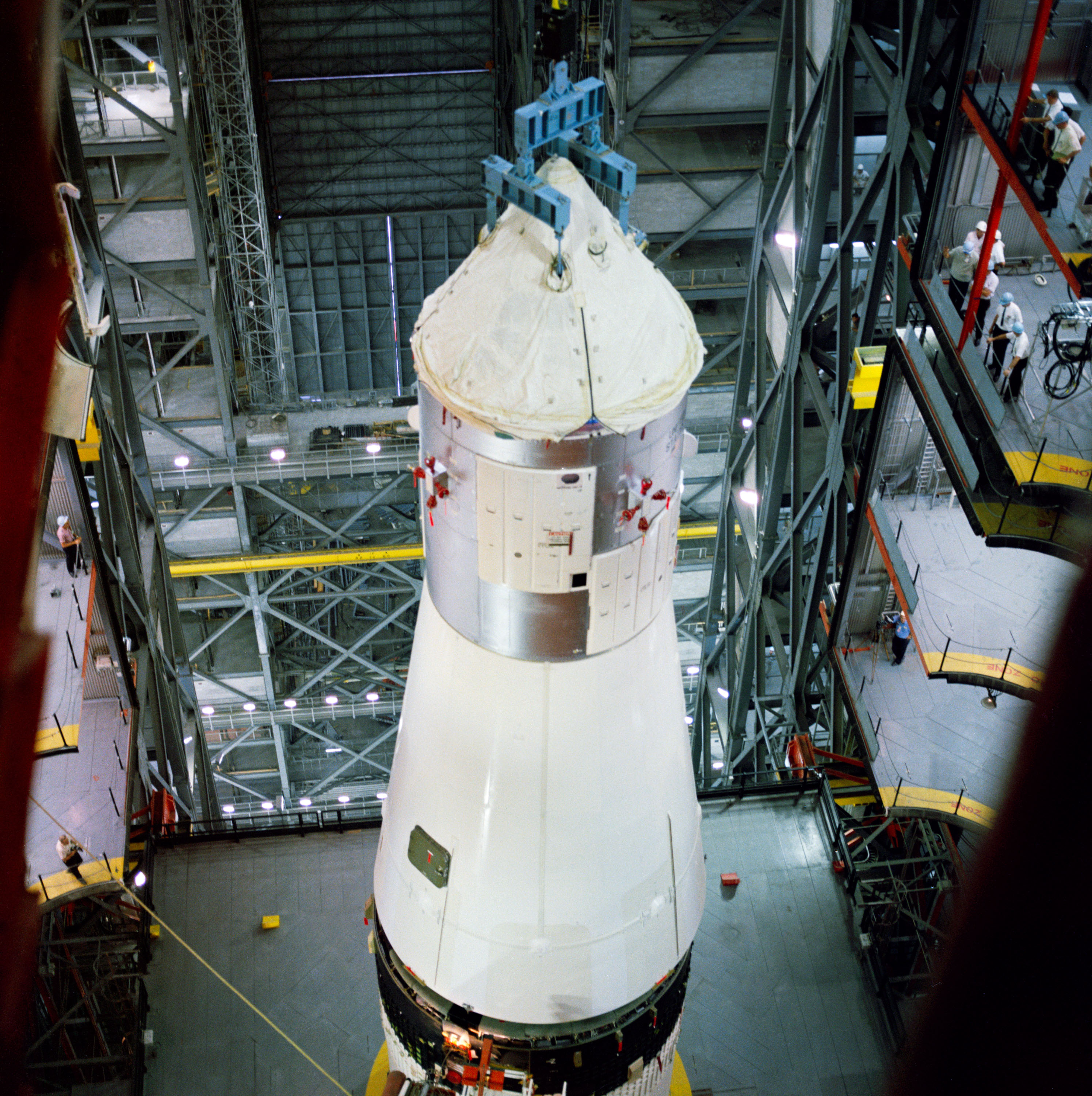
The No. 2 tank had a troubled history. It was meant to have flown on Apollo 10, but was removed in late 1968 when it exhibited trouble. In October of that year, it was accidentally dropped—only a small distance, but enough to damage the tubing used to fill and drain its propellants—and that was now at the root of why the tank could not be properly emptied. Unknown to everyone, however, there was another problem: a potentially catastrophic design flaw, whose full effects would not be felt until 55 hours into the Apollo 13 mission, by which time the craft was over 200,000 miles (320,000 km) from Earth. Apollo was originally designed to operate at 28 volts of electrical power, but was upgraded in 1965 to accept 65 volts from GSE. Everything on the spacecraft was modified accordingly, apart from a small thermostat inside the oxygen tank, which was still rated at only 28 volts.
The role of this thermostat was crucial: it would shut off the tank’s heaters when internal temperatures rose above 26 degrees Celsius (78.8 degrees Fahrenheit). No one picked up the error. When the liquid oxygen were boiled off in late March 1970, the thermostat was activated and the excess voltage arced and welded its electrical contacts shut. Outside, monitoring the process, the technician saw nothing amiss, since his gauges went no higher than 30 degrees Celsius (86 degrees Fahrenheit).
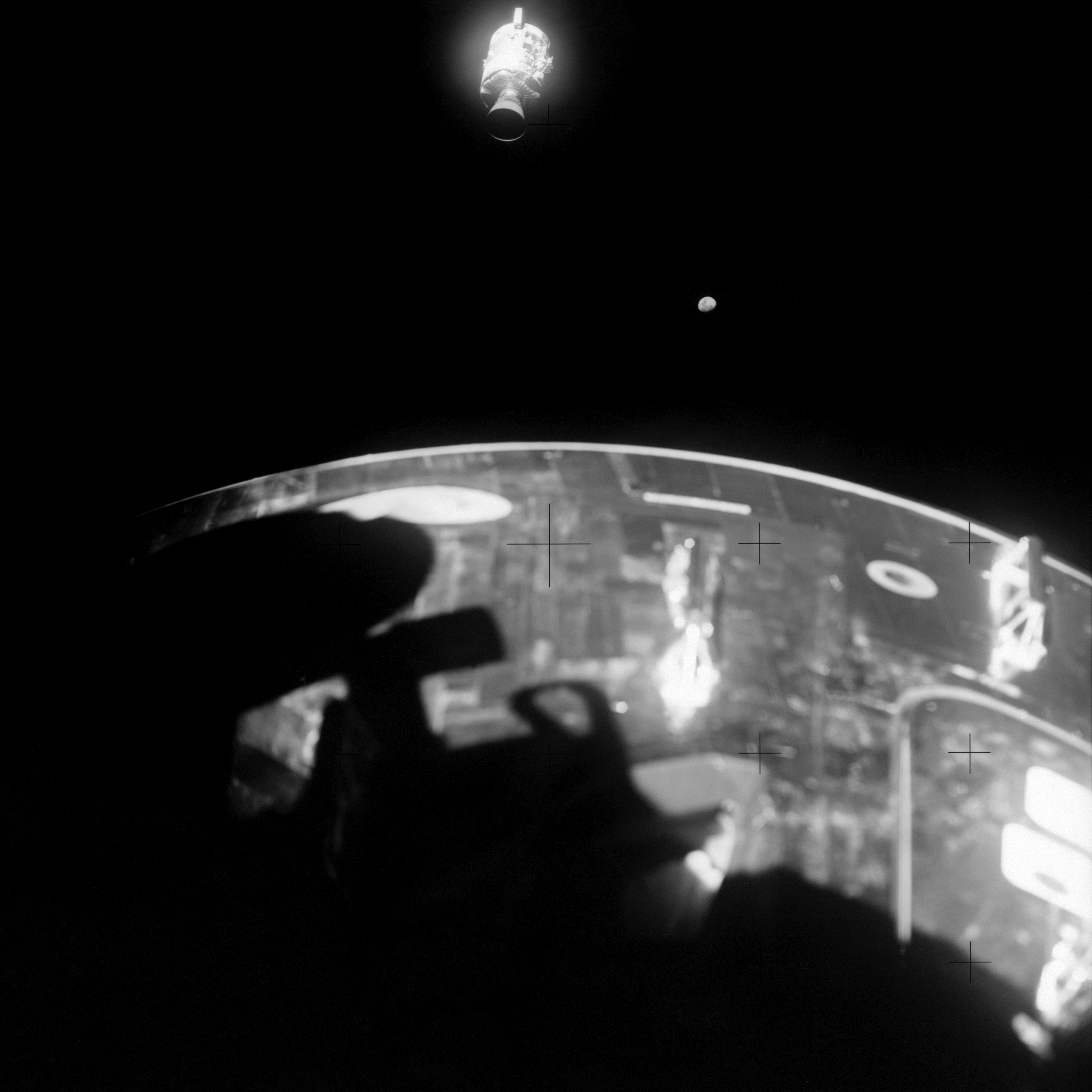
In reality, during the eight hours that it took the tank to boil off all of the oxygen, the temperature inside had soared to more than 500 degrees Celsius (930 degrees Fahrenheit). In doing so, it baked and cracked the Teflon covering wires for an electric fan which would stir the tank’s contents in space. When the tank was loaded with liquid oxygen, shortly before launch, there was still Teflon debris and bare electrical wiring inside the tank. Teflon itself is not flammable, but immersed in a pressurized oxygen environment, almost anything would burn. The tank was nothing less than a sitting time bomb.
Two weeks later, at 9:06 p.m. CDT on 13 April, Mission Control issued a last request to Jack Swigert before he retired to bed for the night. He was to flip several switches to stir the oxygen and hydrogen tanks in the service module. Held at super-critical densities at -206 degrees Celsius (-338.8 degrees Fahrenheit), the slushy liquids became stratified in weightlessness and it was often hard for engineers to gain precise quantity readings. Swigert flipped the switches labelled H2 FANS and O2 FANS. As the reverberation of the switch throws died, all was silent in the command module. Then, without warning, the entire spacecraft shuddered with a dull bang…and fell quiet once more.
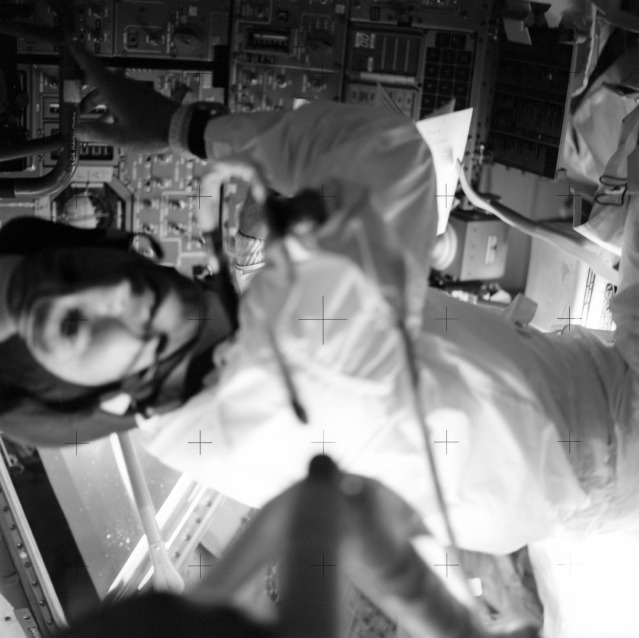
Jim Lovell was floating back through the tunnel from Aquarius and both he and Swigert thought that Fred Haise had set off the cabin relief valve…until Haise’s eyes convinced them otherwise. In fact, wrote Lovell, in his autobiography, Lost Moon, the bang had left all three of them “truly, wholly, profoundly frightened”.
If they had known what had happened—that the electric fan had caused the bare wiring to short, which caused a spark to ignite the Teflon fragments, which caused a violent explosion to blow the top off the No. 2 tank, which caused a puncturing of the No. 1 tank and which tore an entire panel away from the service module—the astronauts would surely have been far more frightened. For now, their attention was halted by the sound of the master alarm and a red warning light, whose message was worrying. It read “Main Bus B Undervolt”, and its illumination told them that there had been an abrupt power loss from one of the ship’s two main electrical buses. If the warning was for real—and was not an instrumentation glitch—it signaled very bad news. If their life-sustaining oxygen was bleeding away, then Lovell, Swigert and Haise were dead men floating.
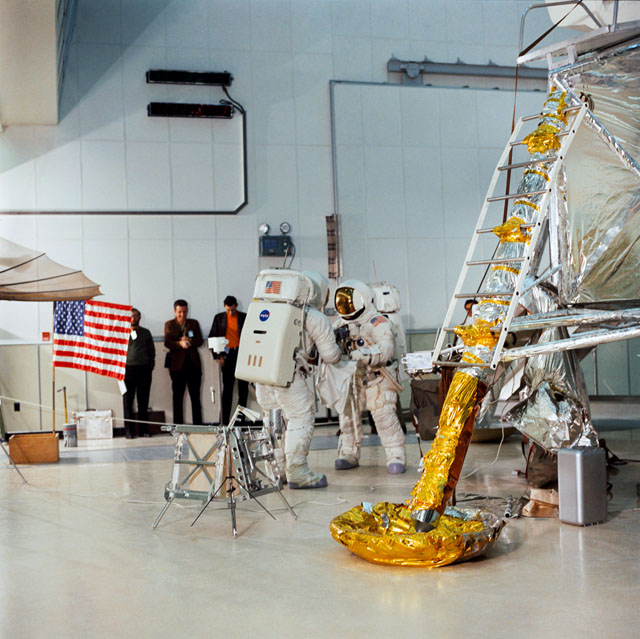
Swigert’s shout was the first call to Mission Control. “Hey, we’ve got a problem here.”
“This is Houston,” replied Capcom Jack Lousma, somewhat puzzled. “Say again, please.”
Now it was Jim Lovell’s voice which crackled across the 200,000 miles (320,000 km) back to the ears of Lousma in Mission Control. “Houston, we’ve had a problem. We’ve had a Main B Bus Undervolt.”
“Roger, Main B Undervolt,” verified Lousma. “Okay, stand by, 13, we’re looking at it.”
The man in charge of “looking at it” was Seymour “Sy” Liebergot, the flight controller in charge of Apollo 13’s electrical, environmental and communications systems, callsigned “EECOM”. Months of training had imbued Liebergot with the skills to identify the tell-tale indicators of problems, before they emerged…and the dangers of missing something had bitten him on several occasions. Any likelihood that the problem facing Apollo 13 was just an instrumentation error was eliminated by the crew, who had not only seen the warning, but had heard the bang and most certainly felt the vibration. It was a sound which Lovell later likened to a thunderclap and Haise, returning to the command module, had seen the walls of the connecting tunnel visibly flex all around him.
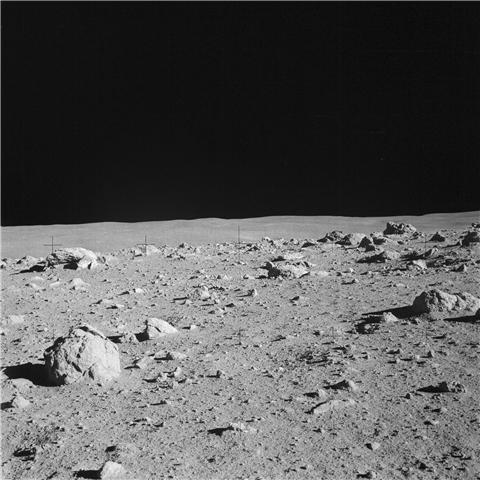
On the ground, controllers could only watch in horror as the quantity and pressure readings for the No. 2 oxygen tank plummeted to zero. From their seats, the astronauts saw the same thing. More warning lights glowed: now two of the three fuel cells were dead and the No. 1 tank’s oxygen was steadily dwindling away. Lovell could not believe his eyes. Oxygen tanks were built with the fewest number of parts possible, to make the likelihood of a breakdown infinitesimally small. Even if one tank failed, its twin was more than capable of powering all three fuel cells and, in turn, running both the A and B electrical buses. “The probability of any one of these components failing,” wrote Lovell, “was down in the multi-multi-decimal places. The probability of one tank, two fuel cells and one bus failing, at the same time, was off the numerical charts!”
The maxim was simple and they had all learned it through their training: structural things don’t break. “Fluid lines and joints can leak,” Ken Mattingly told the NASA oral historian, years later, “but physical structure doesn’t break. The reason we had that rule is that if you admitted to that, then the number of things you could have to prepare for is infinite. So we never looked at those kinds of implications.”
Now, a calamity of the most dire proportions was unfolding, second by second. The bang and associated problems had caused Odyssey’s computer to restart, whilst the high-gain antenna stopped working and switched communications to four smaller omni-directional antennas. Fred Haise knew that Bus B was now virtually dead and set to work reconnecting the command module’s systems to Bus A … only to discover that it, too, was starved of electrical current. Only one fuel cell was now producing current. A landing on the Moon could not occur with only one operational fuel cell. Thirteen minutes after the bang, Lovell was midway through a fruitless effort to stabilize the craft with his hand controller when, irritated, he floated to the window and craned his neck to look outside.
What he saw made his blood run cold.
Twirling away into the blackness, like cigarette smoke, was a thin, whitish cloud of gas, emerging from the side of the service module. As soon as it entered space, it crystallized and formed a vast halo. Apollo 13 was leaking.
“Houston,” Lovell radioed, “we are venting something out into space. It’s a gas of some sort.” Jack Lousma acknowledged his call.
It was at this point, wrote Flight Director Gene Kranz in his autobiography, Failure Is Not An Option, that all the pieces of the puzzle fell into place. As head of the White Team, Kranz was the most senior of Apollo 13’s four flight directors and the shock which rippled through Mission Control was tangible. “The controllers,” he wrote, “felt they were toppling into an abyss.” An explosion and the venting of oxygen had caused all of the problems which were now being seen, felt, and heard. The jolt of the blast had snapped shut the fuel cells’ reactant valves, effectively cutting the supply of cryogens and starving the electrical system. Fuel valves to the thrusters had closed, making it difficult for the astronauts to regain control, and the propulsive effect of the venting oxygen meant that the antenna could not focus properly on Earth.
As the evening of the 13th wore on, a new mission was already taking shape…one whose modus operandi had changed from landing on the Moon to dealing with an instrumentation problem to finding a coherent way of getting three men home alive.
Part 3 of this four-part article will appear next weekend.
.
.
FOLLOW AmericaSpace on Facebook and Twitter!
.
.
Missions » Apollo »




